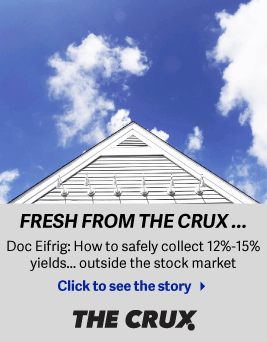| Home | About Us | Resources | Archive | Free Reports | Market Window |
|
Editor's note: If you're saving your money and investing for the future, chances are good that you also invest in yourself by reading books. On this topic, our friend and colleague Mark Ford just shared a fantastic way to quickly read a lot of valuable books. We thought it was one of the best essays we've read all year. You'll find it below...
How to Read an Extra 52 Helpful Books This YearBy
Wednesday, April 15, 2015
You can give yourself a competitive edge – one that could pay you big dividends one day – by doing a little carefully calculated extra reading this year.
I know you are busy already, but what I'm about to suggest won't take too much time – and the benefits you'll get from it will be wonderful. I'm going to show you how to read an extra 52 books this year and every year thereafter...
Every day, new nonfiction books are published on every possible topic. Some of these contain information and advice that will help you achieve your goals. The trick is to locate the good ones and read them quickly, efficiently, and strategically.
Tracking down good books is easy and fun. Make it a habit to browse bookstores, especially in airports and train stations (where business and self-help titles are abundant). Pick up any title that interests you. Scan the table of contents. If it seems promising, read the first page. If you find the book interesting and easy to read, hold on to it. Keep going until you have twice as many books as you can read, and then keep the ones you are most excited by.
If you follow these simple steps, you'll be eager to get home and start reading. Eagerness alone won't get you through an extra book a week, no matter how interesting and well-written it is.
To keep up with a weekly schedule, you have to find a way to cut your reading time by less than half. If you approach nonfiction books tactically, they don't take very long to "read."
The first and most important thing is to realize that books like these are raw material for your imagination, not finished artwork. So you should go through them as you might go through a big pile of kindling, looking for a few straight, dry pieces. Don't waste your time fooling around with what's not important. And don't feel compelled to read every word.
I like to think that every good book has one big secret to convey and several smaller ones. Your job is to find out – as quickly as you can – what they are. There are many ways to speed-read, several of which I've tried over the years.
The system I use now allows me to get through most business books in two to four hours.
Here's how I do it (and I'm a painfully slow reader):
Once you get used to this way of reading, you'll find it addictive. You'll have a constant stream of new ideas coming to you that will help you in every important area of your life. You'll get smarter and better with each passing week – and that will make you feel better and more confident. Your friends and colleagues will notice the difference. And sooner or later, one of the ideas you pick up will be the big one that takes you to the next level.
Start today by going to the bookstore after work and picking up your first title. Feel free to mark it up with a pen or highlighter, but remember that you are not looking to study it in detail but to select from it a few very helpful secrets.
Use the scanning method I recommended if it helps, but make sure you get through this book within the next seven days.
The most important thing to remember is not to try to learn too much. One big idea and a half-dozen little ones are plenty. Get them down and move on.
Regards,
Mark Ford
Further Reading:
Be sure to check out our brand-new Stansberry Research bookstore, right here.
You can find more of Mark Ford's wise insights here:
The Simple Concept That Made Me $6 Million Last Year
If you are not ready to become the next Bill Gates, this essay is for you... The Biggest Mistake You'll Make When You Retire
It's a common mistake, but you won't hear it mentioned by retirement experts... Market NotesBUYER BEWARE! Today's note is a reminder that not all ETFs are worth buying...
Exchange-traded funds, or ETFs, were created in the early 1990s to provide investors with "instant diversification." Most ETFs track indexes (like the S&P 500) or commodities (like gold)... And because many are not actively managed, they do this with low fees. A good ETF can be a big help to individual investors.
But not all ETFs work as advertised. Take the popular U.S. Natural Gas Fund (UNG), for instance. It's supposed to track the price performance of natural gas, but its flawed structure makes it "bleed" value from shareholder accounts. It's one of our candidates for "the world's worst ETF."
You can see this dynamic at work below. Our chart plots the performance of natural gas (blue line) and UNG (black line) over the past five years. Natural gas is down 40% – a significant loss. But UNG has managed to do twice as bad, losing 80% of its value. Just because an ETF says it tracks an index or commodity, doesn't mean it will.
 |
Recent Articles
|



